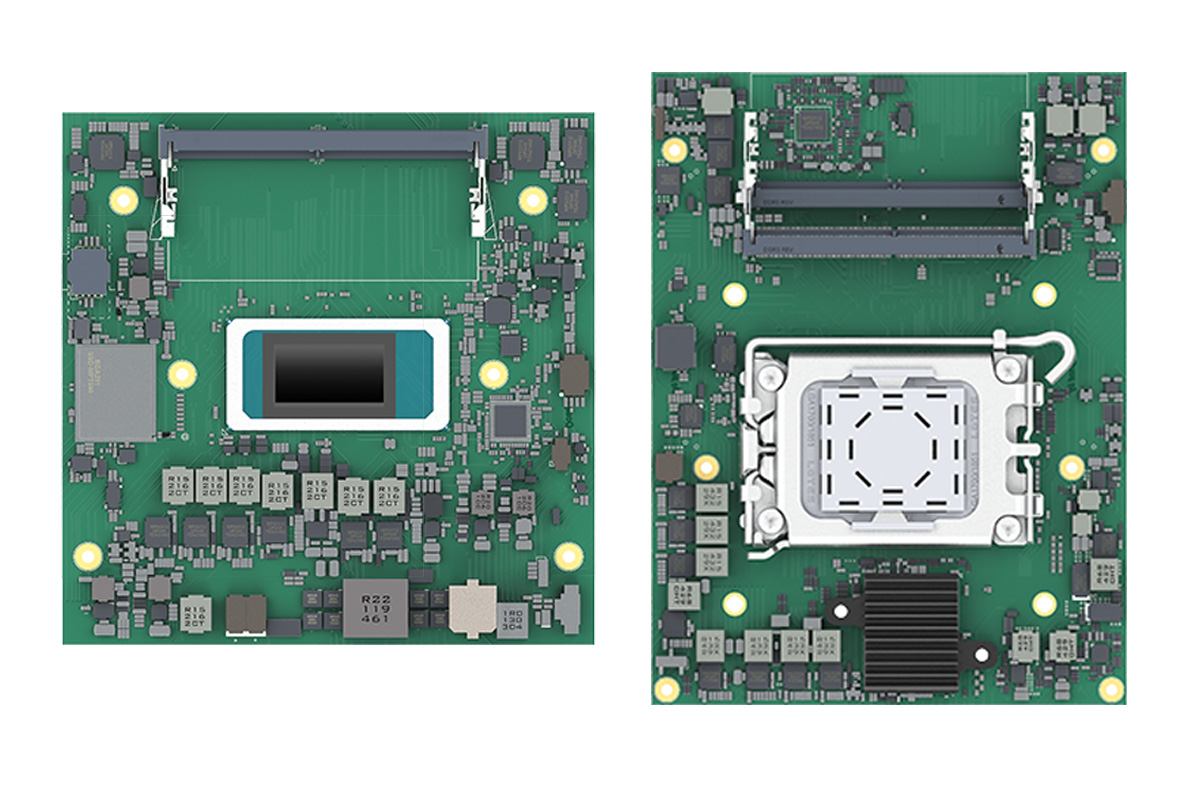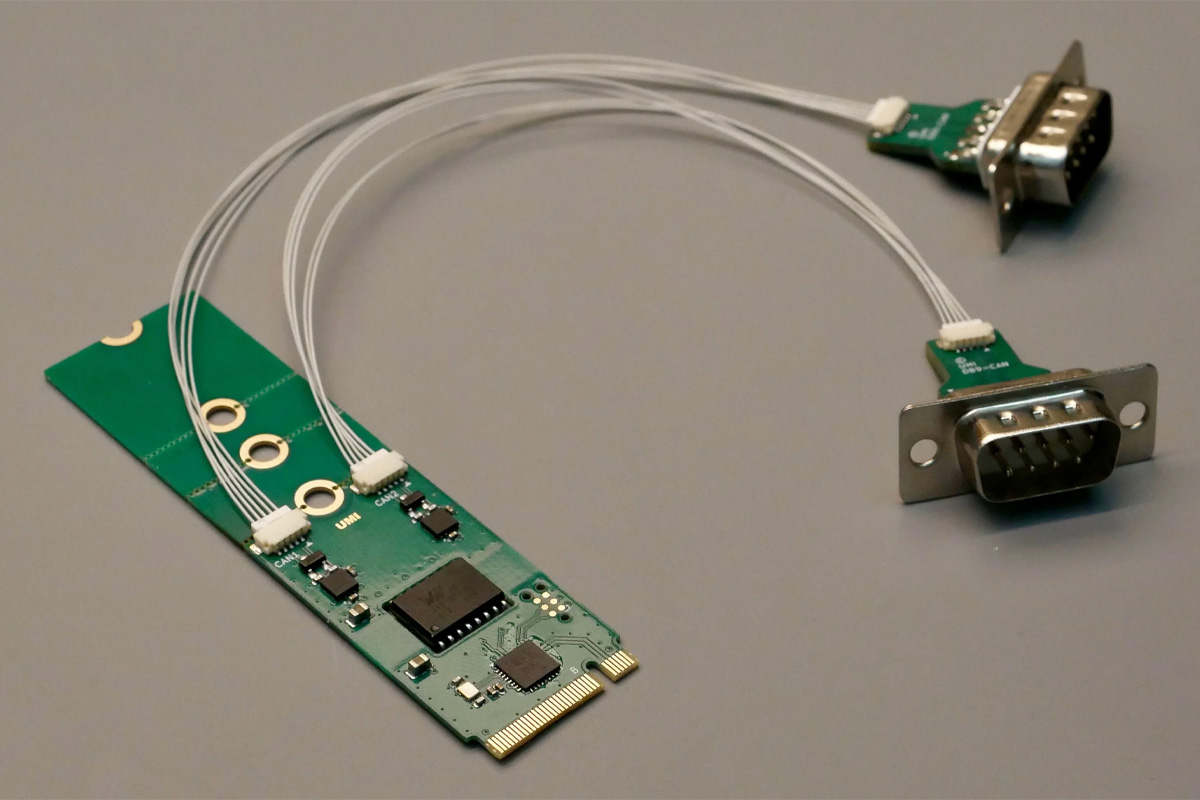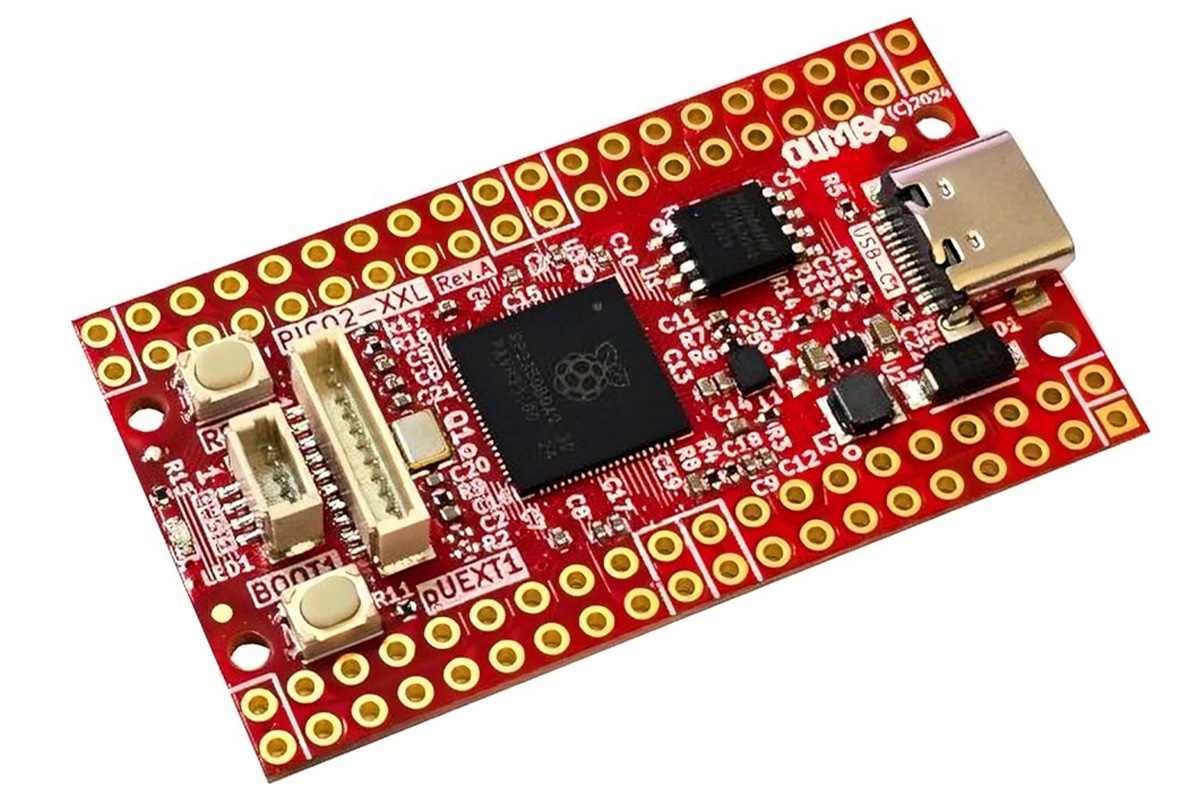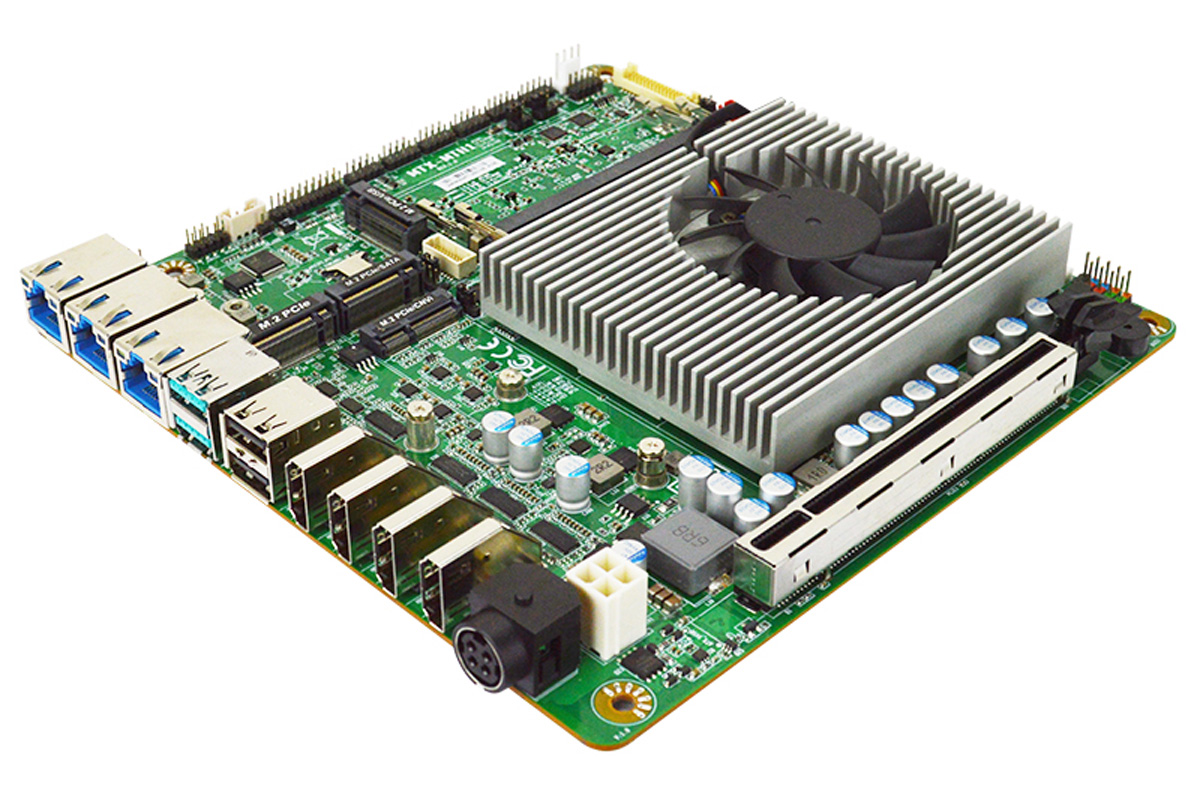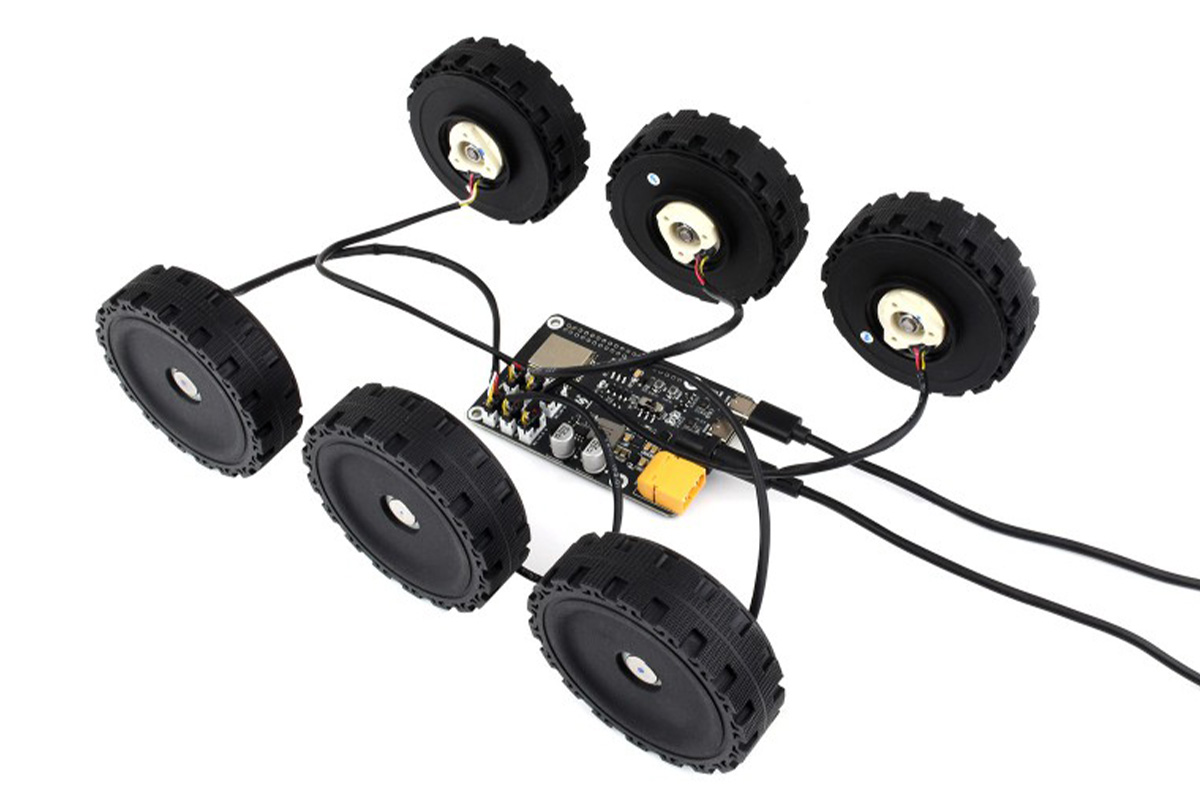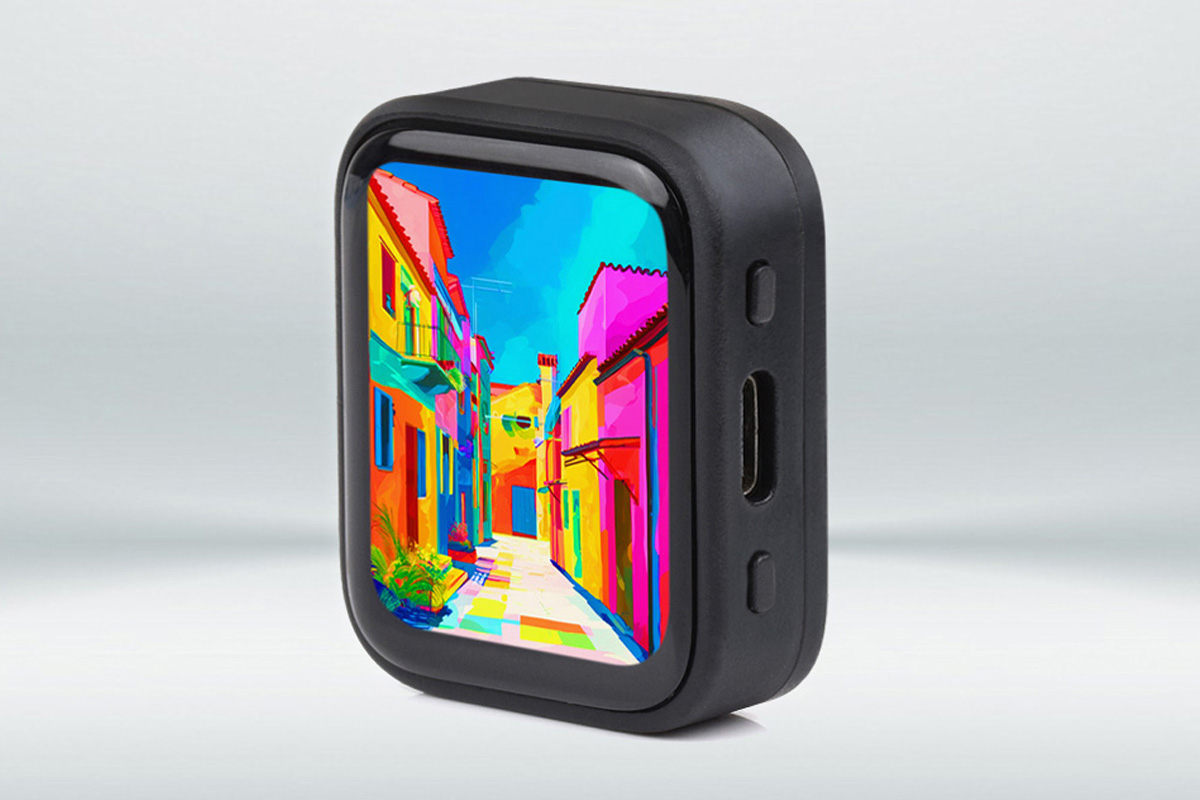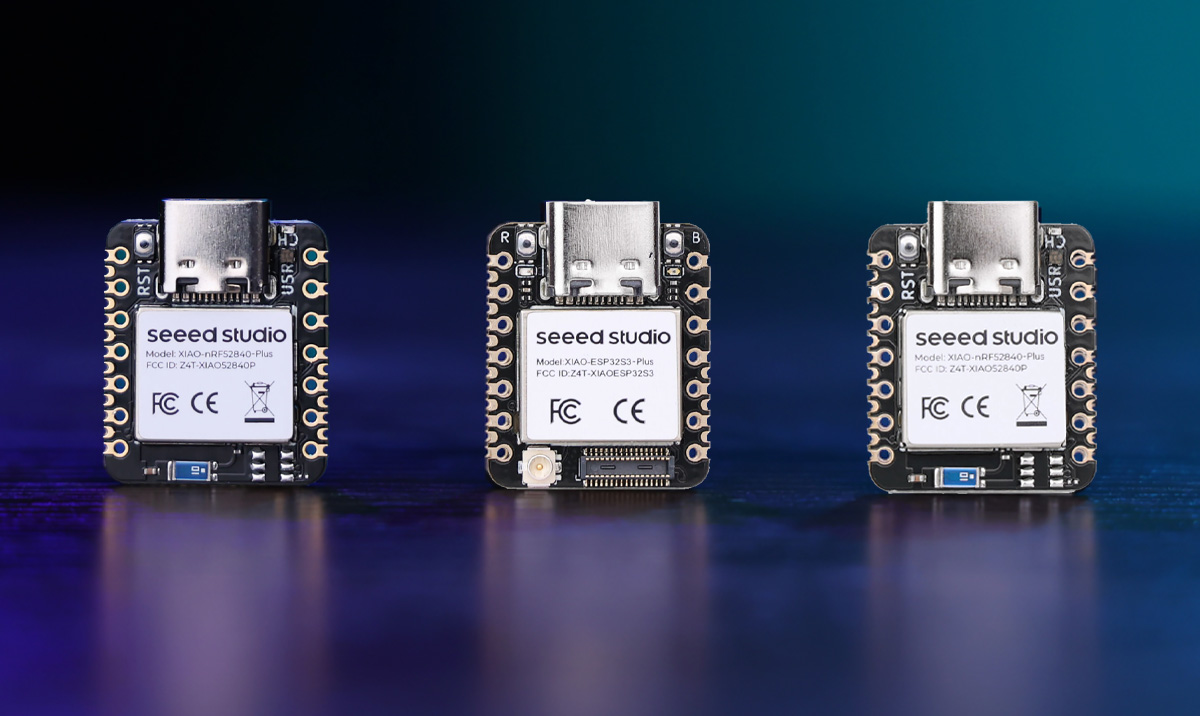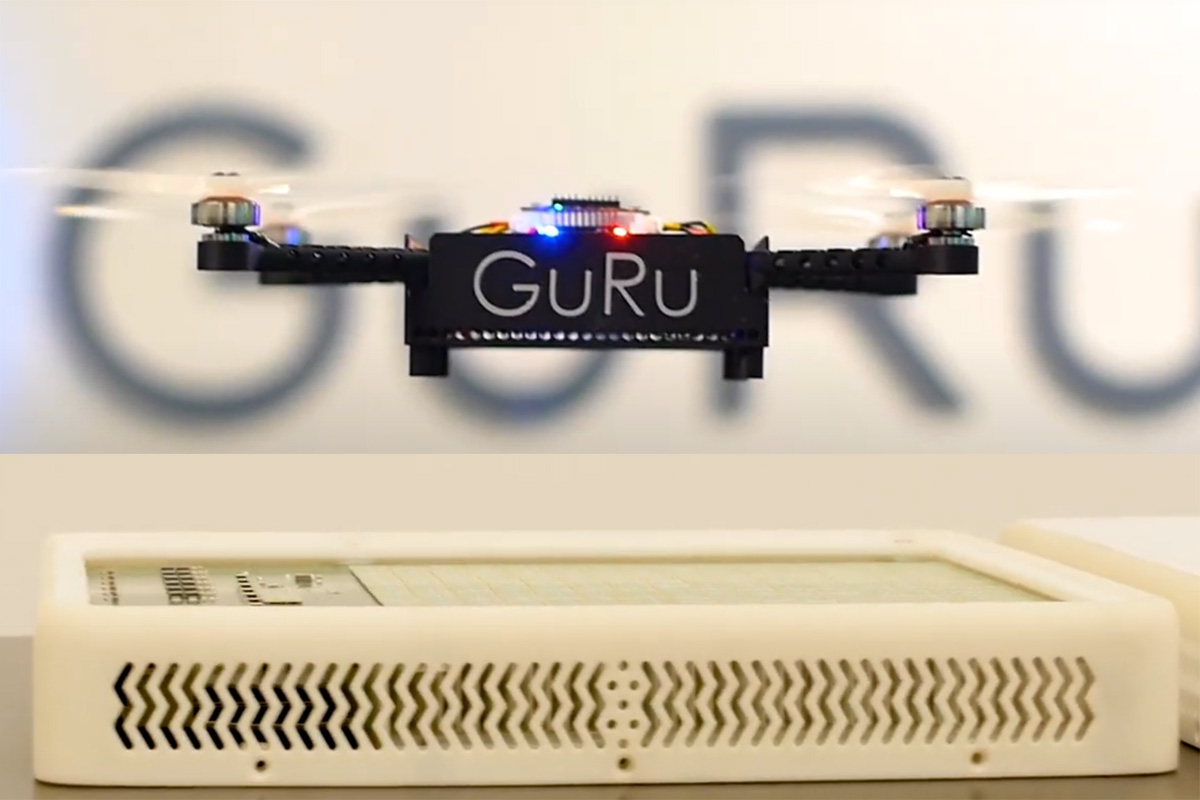Portwell PCOM-B887 and PCOM-B886 are two new COM-HPC client modules built around Intel Core Ultra 200S/200U/200H processors delivering high-performance computing and AI acceleration for industrial, edge, and AI-driven applications. The Portwell PCOM-B887 (Size C) module is built around the 200S Series, offers up to 36 TOPS, supports 192GB DDR5 memory, and features 42 PCIe lanes up to Gen5. The PCOM-B886 (Size B) module supports 200H/200U Series processors, which deliver up to 99 TOPS, support 96GB DDR5 memory, and include 24 PCIe lanes. Both modules feature various I/O options, including USB4, USB3.2 Gen2, and multiple display outputs. Portwell PCOM-B887 – COM-HPC Client Type Size C module The PCOM-B887 COM-HPC Client Type Size C module is powered by Intel Core Ultra 200S Series processors, which feature up to 36 TOPS of AI performance via an integrated neural processing unit (NPU). It supports up to 192GB of DDR5 memory at 4800MT/s with 42 […]
M.2 CAN FD adapter adds CAN Bus support to hosts with a spare M.2 Key-B socket
Designed by Universal Machine Intelligence, the M.2 CAN FD adapter is an M.2 to CAN FD converter board that brings two high-speed CAN FD interfaces to projects requiring reliable high-speed communication. It is an M.2 B-key card with a slim form factor and a breakaway design that supports slot lengths like 2242, 2252, 2260, and 2280. The adapter supports CAN FD and CAN 2.0B protocols with speeds up to 5Mbit/s and includes functional isolation between the host and CAN bus for additional safety. Additional features include a built-in network termination switch with split termination, ultra-low power consumption, and compatibility with 12V, 24V, and 48V systems. Designed for industrial environments, this adapter is ideal for applications like industrial monitoring and control, robotics, production line automation, hardware-in-the-loop testing, remote system access, data logging, and embedded computing. M.2 CAN FD adapter specifications: CAN Bus CAN channel – Dual-channel CAN interfaces that are independent […]
Open hardware RP2350B boards offer up to 16MB flash, 8MB PSRAM, microSD card slot, 48x GPIOs
Olimex has recently released the PICO2-XL and PICO2-XXL open-source hardware RP2350B development boards with up to 16MB flash, 8MB PSRAM, 48 GPIOs, a microSD card slot, and more. The main difference between the two boards is that the PICO2-XL includes 2MB of external QSPI Flash and a compact flat-bottom design, making it ideal for simpler, space-constrained projects. In contrast, the PICO2-XXL offers 16MB of QSPI Flash, 8MB of PSRAM, and a microSD card slot for expanded storage and performance, catering to more demanding applications like IoT and edge computing. Olimex PICO2-XL and PICO2-XXL specifications SoC – Raspberry Pi RP2350B MCU CPU Dual-core Arm Cortex-M33 @150MHz with Arm Trustzone Dual-core 32-bit Hazard3 RISC-V @ 150MHz Up to two cores can be used at the same time Memory – 520KB SRAM 8kB OTP storage Security – Secure boot Package – QFN-80; 10×10 mm Memory – 8MB PSRAM (PICO2-XXL only) Storage PICO2-XL – […]
Jetway MTX-MTH1 thin Mini-ITX SBC features Intel Core Ultra 5/7 SoC, three 2.5GbE, four HDMI 2.1, PCIe Gen5 x8 slot
Jetway MTX-MTH1 is a thin industrial Mini-ITX SBC built around Intel Core Ultra 5/7 Meteor Lake processors with Intel Arc Graphics and support for up to 96GB of DDR5 memory. The most interesting features of this compact board are the three 2.5GbE jacks and four HDMI 2.1 video outputs for 4K and 8K displays. Additionally, it features multiple USB ports, a PCIe Gen 5 x8 slot, M.2 slots for storage and 4G LTE/5G, serial ports, and GPIO interfaces. With industrial environmental tolerance (-20°C to 60°C) this thin Mini-ITX motherboard is ideal for industrial automation, AI processing, edge computing, and embedded systems. Jetway MTX-MTH1 specifications: SoC (one or the other) Intel Core Ultra 7 Processor 155H (Meteor Lake, TDP 28W) with Intel Arc Graphics Intel Core Ultra 5 Processor 125H (Meteor Lake, TDP 28W) with Intel Arc Graphics System Memory – 2x DDR5 5600MHz SO-DIMM, up to 96GB Storage SATA III […]
ESP32-based Waveshare DDSM Driver HAT (B) for Raspberry Pi supports DDSM400 hub motors
Waveshare has recently launched DDSM Driver HAT (B), a compact Raspberry Pi DDSM (Direct Drive Servo Motor) motor driver designed specifically to drive the DDSM400 hub motors. This board is built around an ESP32 MCU and supports wired (USB and UART) and wireless (2.4GHz WiFi) communication. Additionally, the board features a physical toggle switch, which lets it choose between the ESP32 control or USB control modes. On ESP32 control mode you can control the device through a built-in web application. In the USB control mode, the motor driver can be controlled via USB from a host computer sending JSON commands. An XT60 connector is used to power the board, and programming is done through a USB-C port that connects to the ESP32. The board is suitable for robotics projects, especially for mobile robots in 6×6 or 4×4 configurations. Waveshare DDSM Driver HAT (B) specifications: Wireless MCU – Espressif Systems ESP32-WROOM-32E ESP32 […]
Fully enclosed ESP32-S3 board features 1.8-inch AMOLED, microphone & speaker for AI audio applications
Waveshare ESP32-S3-Touch-AMOLED-1.8 is an ESP32-S3 development board with an AMOLED display and AI audio support fully housed in a plastic enclosure. The most interesting feature of this devkit is its 1.8-inch AMOLED display with a 100000:1 contrast ratio and a wide 178° viewing angle, plus support for AI speech using its built-in microphone and speaker, and a built-in battery for IoT and AI applications. Other features include a QMI8658 6-axis IMU for motion detection, a PCF85063 RTC for time, and an ES8311 audio codec for high-quality audio. The ESP32-S3 provides Bluetooth and Wi-Fi connectivity and the board also features a USB-C port for power and programming. The AXP2101 power management IC enables battery charging and optimization, while GPIO, I2C, and UART pads allow expansion. Waveshare ESP32-S3-Touch-AMOLED-1.8 specifications Wireless MCU – Espressif Systems ESP32-S3R8 CPU – Dual-core Tensilica LX7 @ up to 240 MHz with vector instructions for AI acceleration. Memory – […]
Seeed Studio XIAO Plus series adds more GPIOs through castellated holes
In response to community feedback for more I/O options, Seeed Studio has recently launched the Seeed Studio XIAO Plus series with 23 castellated mounting pins (20 GPIOs, 3 power pins) and improved back solder points, improving compatibility with carrier boards for complex projects. The new series includes the XIAO ESP32S3 Plus, XIAO nRF52840 Plus, and XIAO nRF52840 Sense Plus which are direct upgrades of the XIAO ESP32S3, XIAO nRF52840 BLE, and XIAO nRF52840 Sense boards. The new design allows for easier assembly and scalable production, with double the I/O options. XIAO ESP32S3 Plus The Seeed Studio XIAO ESP32S3 Plus is a compact development board with a total of 23 pins on the board out of which 11 are through-hole GPIO pins 9 additional SMD castellations GPIO pins and 3 through-hole are power pins. The board is built around an ESP32-S3 MCU so it has 2.4GHz WiFi and BLE 5.0 connectivity. Other […]
GuRu’s modular wireless power transfer system can power a drone indefinitely
California-based company GuRu Wireless has recently developed and showcased a scalable and modular wireless power transfer system that is capable of delivering power to a high-power device up to several kilowatts, such as a drone, from up to 30 feet away (a little over 9 meters). They also mention that the system can power low-power devices, like LEDs and consumer electronics, over distances of several kilometers. It’s quite an extension to the GuRu’s desk-range wireless power evaluation kit we covered in 2020. The system uses 24 GHz high-frequency millimeter-wave radio signals to deliver energy over long distances without needing batteries or tethered systems. GuRu’s system uses a phased array transmitter with proprietary RFICs, to precisely deliver power to the receiver called the Recovery Unit (RU). In a recent demonstration video, GuRu Wireless showcased their wireless power transfer system by powering a drone from 30 feet away, operating it continuously for […]


